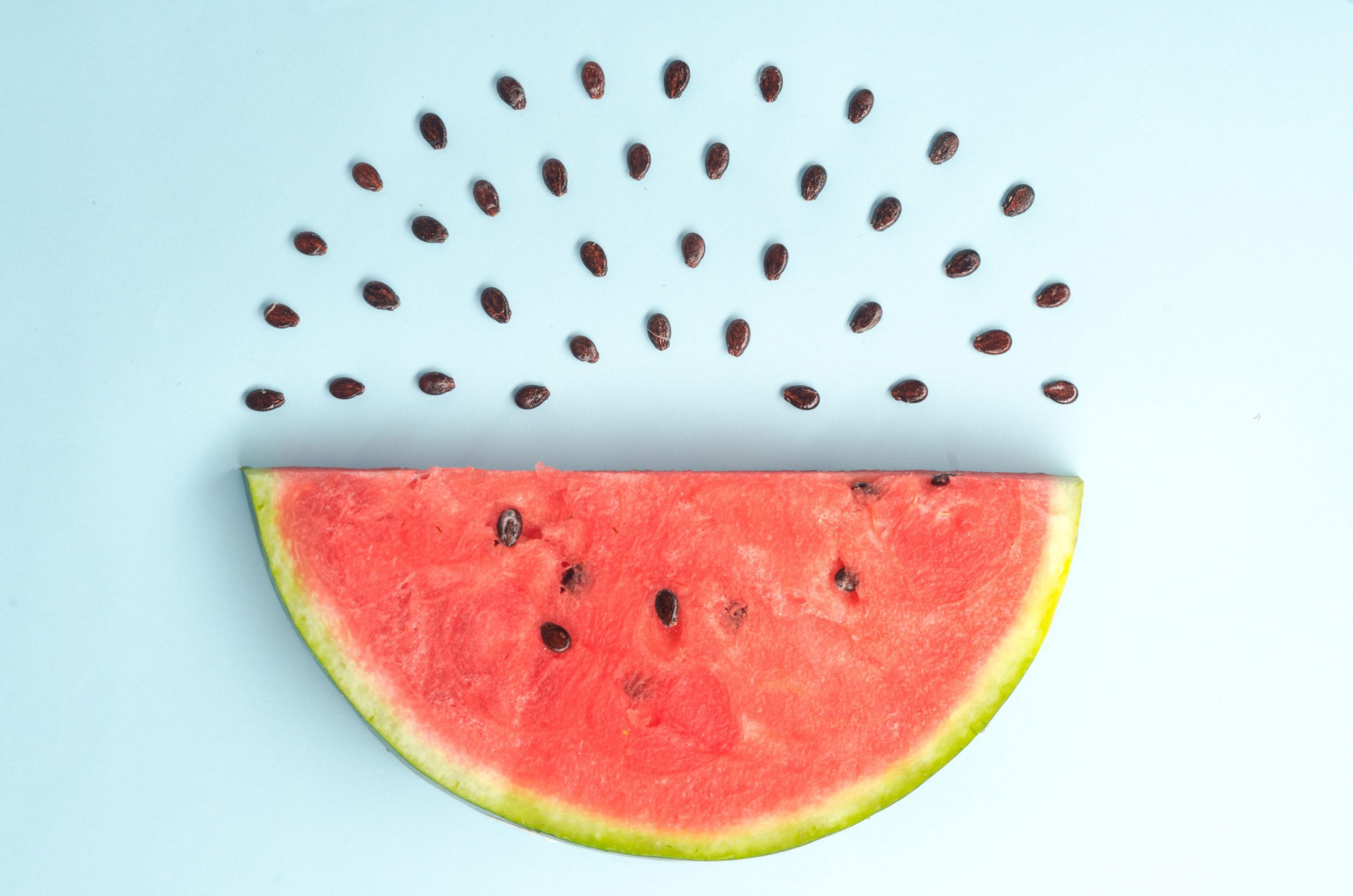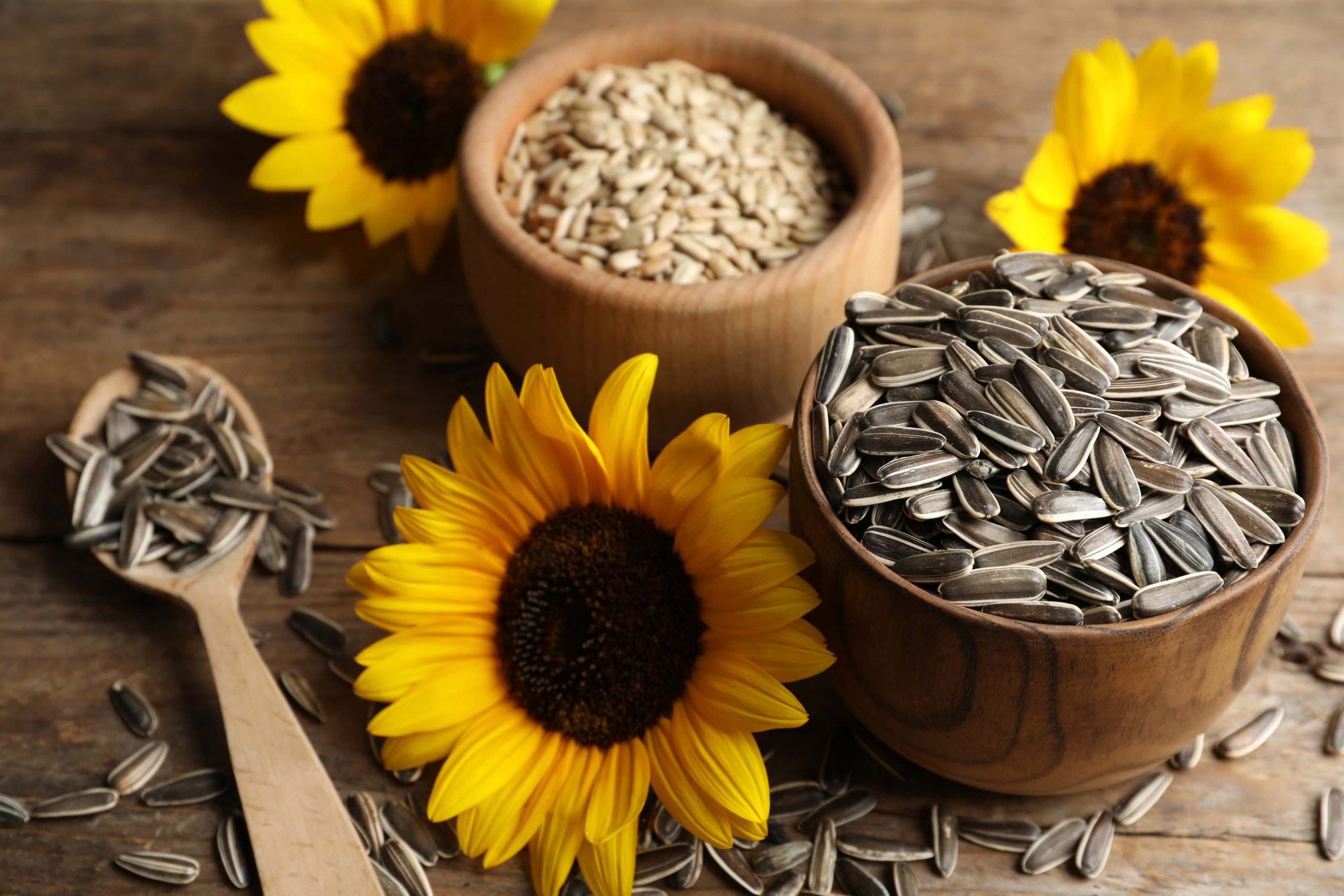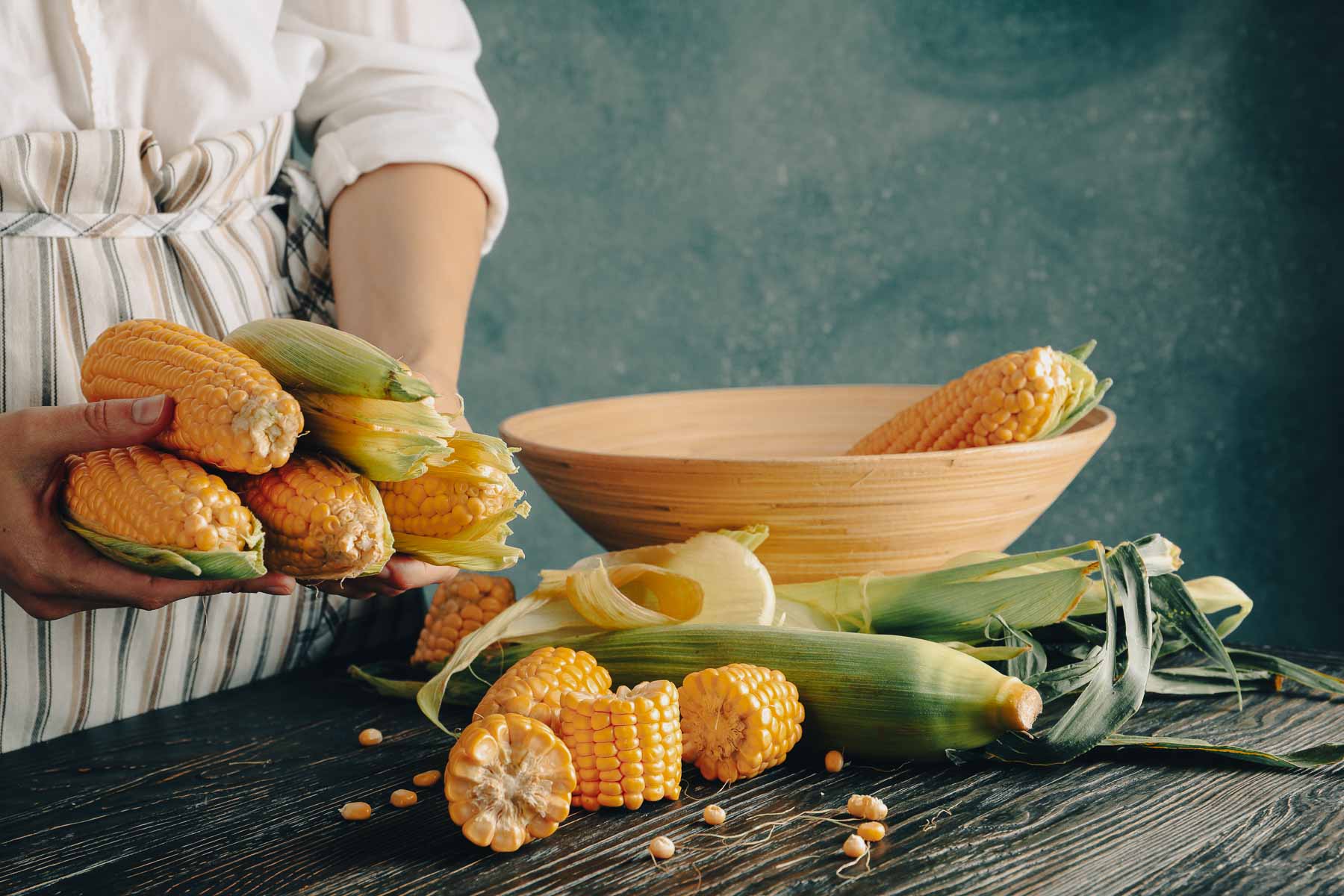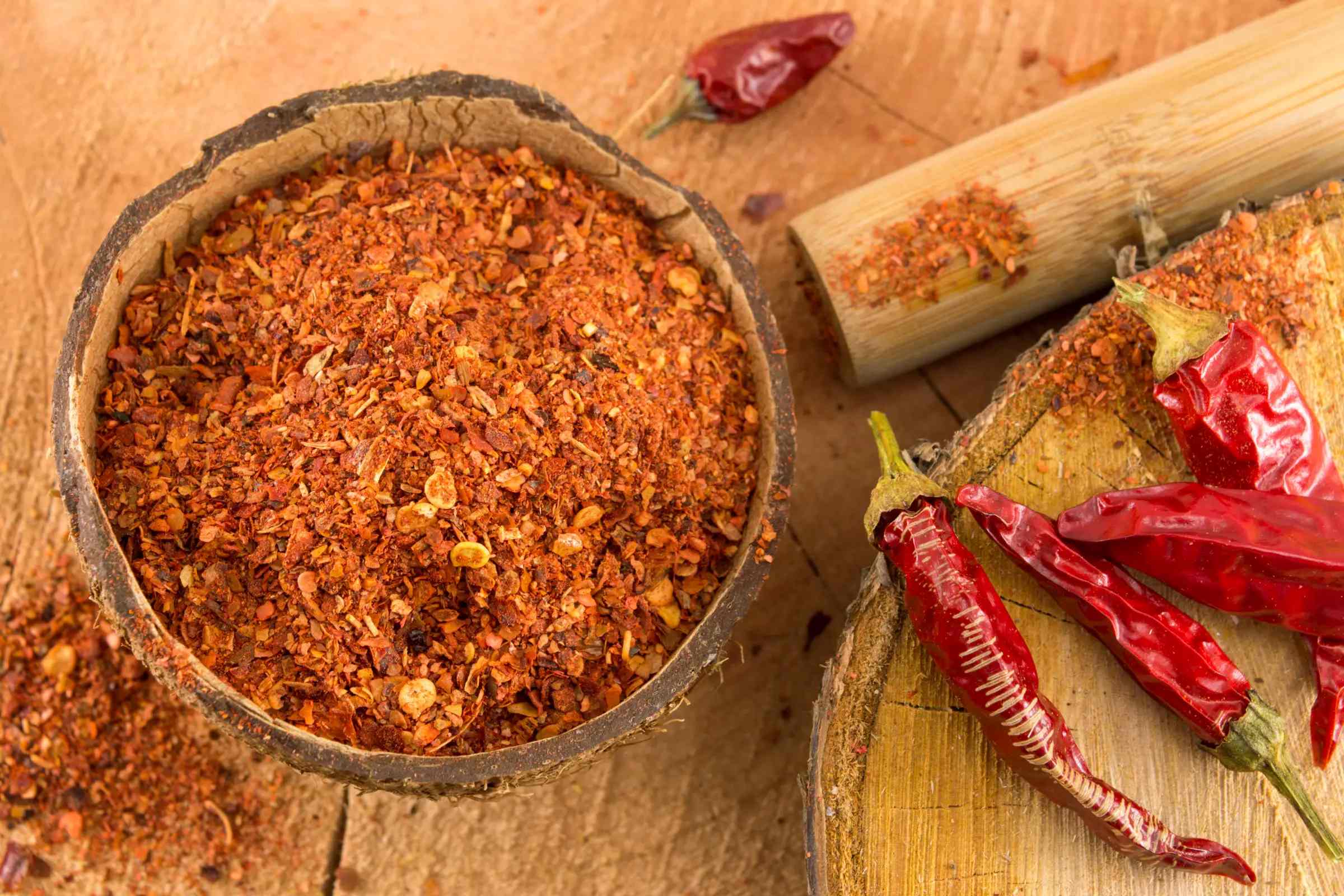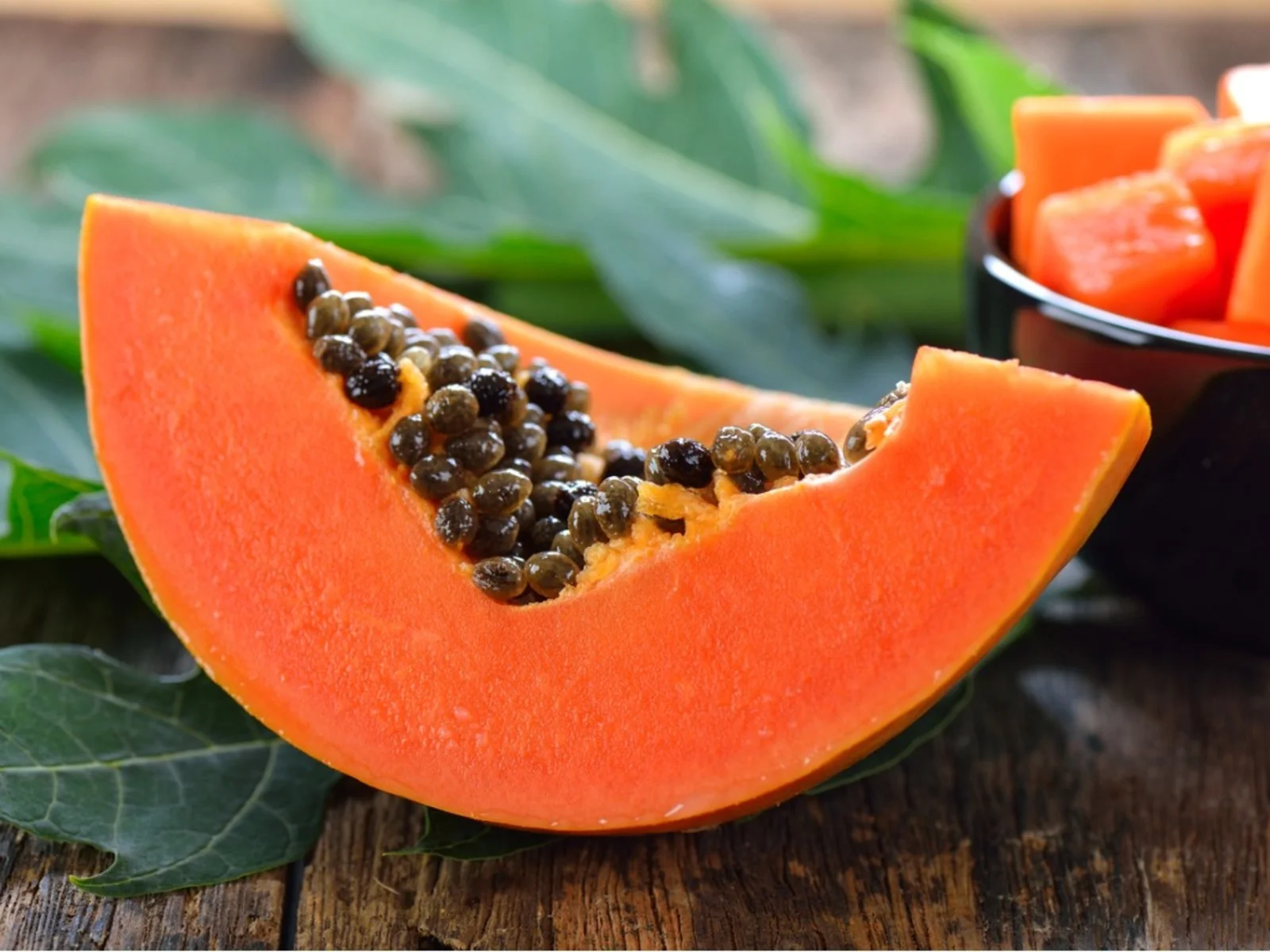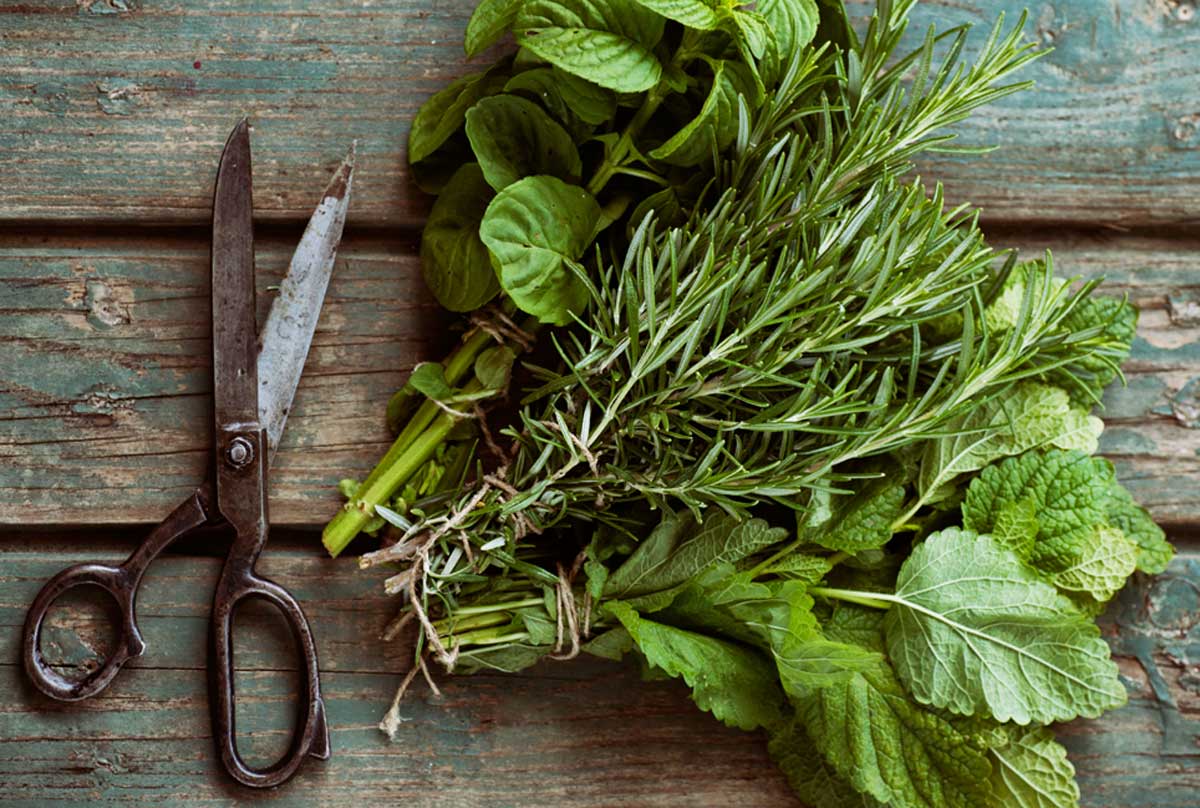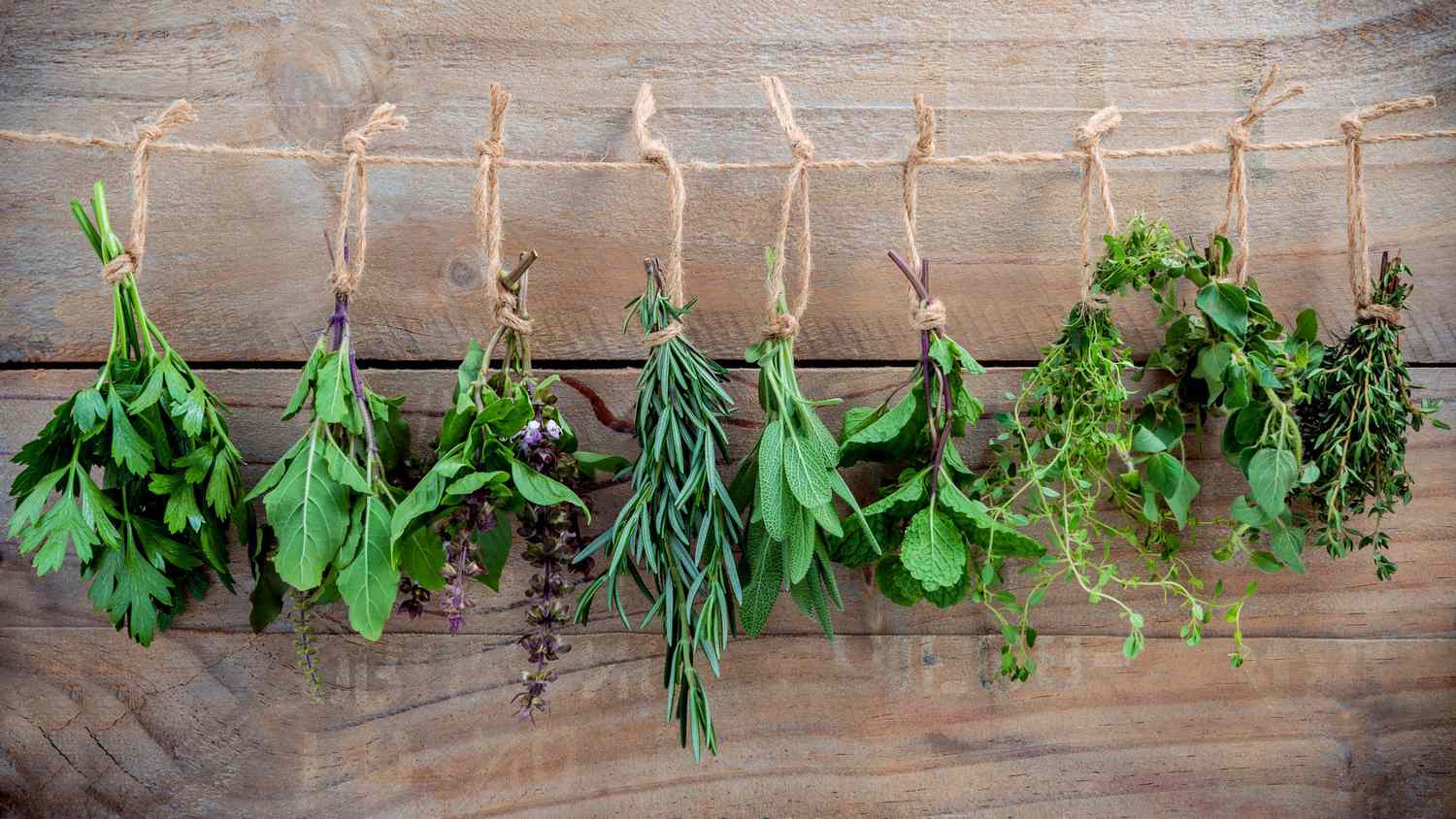Home>Types of Gardening>Edible Gardening>How To Dry Corn For Planting


Edible Gardening
How To Dry Corn For Planting
Published: September 4, 2023
Learn how to dry corn for planting in your edible gardening journey. Follow these steps to preserve and store corn seeds for future harvests.
(Many of the links in this article redirect to a specific reviewed product. Your purchase of these products through affiliate links helps to generate commission for Chicagolandgardening.com, at no extra cost. Learn more)
Table of Contents
Introduction
Welcome to the world of edible gardening! One of the most rewarding endeavors in this realm is growing your own corn. Not only does corn offer a delicious and versatile addition to your meals, but it also presents the opportunity to save and plant your own seeds for future harvests. One important step in this process is drying the corn for planting. But why should you bother drying corn? And how do you go about doing it? In this article, we will explore the answers to these questions and provide you with a comprehensive guide to drying corn for planting.
Drying corn is a crucial step in the seed saving process for several reasons. Firstly, by drying corn, you are ensuring that the seeds are properly matured and ready for planting. This allows for optimum germination rates, resulting in healthy and productive corn plants. Secondly, drying corn allows you to store seeds for future use, reducing the need to purchase new seeds each year. This not only saves you money but also ensures a consistent seed supply. Lastly, drying corn seeds enables you to select and save seeds from the strongest and most productive plants, thereby improving the overall quality of your corn crop over time.
Before we dive into the details of how to dry corn for planting, it’s important to note that not all corn varieties are suitable for drying. Some corn varieties, known as “sweet corn,” are bred for their tenderness and high sugar content, but they are not ideal for drying as their seeds are not mature enough. Instead, it is recommended to choose open-pollinated or heirloom corn varieties specifically labeled as “dent,” “flour,” or “field corn.” These varieties are typically used for drying and subsequently grinding into cornmeal or flour.
Now that we understand the value and importance of drying corn for planting, let’s explore the steps involved in this process. From harvesting the corn to properly drying and storing the seeds, we will guide you through each stage. By the end of this article, you will have all the information you need to successfully dry corn for planting and embark on your fruitful journey as an edible gardener.
Why Dry Corn for Planting?
Drying corn for planting is an essential practice for any avid gardener or farmer. While it may require some extra effort and time, the benefits that come from drying corn seeds far outweigh the initial investment. Here are several compelling reasons why you should consider drying corn for planting:
- Mature and High-Quality Seeds: Drying corn allows the seeds to reach their full maturity before you plant them. When corn is properly dried, it ensures that the seeds are completely developed and capable of germinating. This promotes higher germination rates and healthier plants, resulting in a more successful harvest.
- Long-Term Seed Storage: By drying corn, you can store the seeds for an extended period. This means that you can save and reuse seeds from one growing season to the next, reducing the need to purchase new seeds each year. Not only does this save you money, but it also provides a reliable and consistent source of seeds for your corn crop.
- Preservation of Genetic Diversity: Drying corn seeds allows you to preserve and maintain the genetic diversity of different corn varieties. As you dry corn for planting, you can select seeds from the strongest and most productive plants. Over time, this practice helps to improve the overall quality and adaptability of the corn crop, ensuring its long-term sustainability.
- Self-Sufficiency and Independence: By drying corn seeds, you become less reliant on purchasing seeds from external sources. This promotes self-sufficiency and gives you greater control over the quality and characteristics of your corn plants. Additionally, you can adapt and save seeds from the corn that performs best in your specific growing conditions, further enhancing your independence as a gardener.
- Promoting Traditional Agricultural Practices: Drying corn for planting is an age-old practice that has been passed down through generations. By continuing this tradition, you contribute to the preservation of cultural and agricultural heritage. It also allows you to engage with the rich history of corn cultivation and develop a deeper connection to the food you grow.
From ensuring the quality of the seeds to providing long-term seed storage and preserving genetic diversity, drying corn for planting offers numerous advantages for gardeners and farmers alike. The next section will guide you through the process of choosing the right corn variety for optimal drying.
Choosing the Right Corn Variety for Drying
When it comes to drying corn for planting, selecting the right variety is crucial. Not all corn types are suitable for drying, as some are specifically bred for their tenderness and high sugar content. To ensure successful drying and optimal seed quality, it is important to choose corn varieties that are specifically labeled as “dent,” “flour,” or “field corn.” Here’s what you need to consider when selecting the right corn variety for drying:
- Nature of Field Corn: Field corn, also known as dent corn, is the most commonly used type for drying and subsequent processing into cornmeal or flour. Dent corn varieties have a dented or indented area on the crown of the kernel, indicating that the corn is fully mature. This maturity is important for the successful drying of corn seeds.
- Open-Pollinated or Heirloom Varieties: Look for open-pollinated or heirloom varieties of corn that are known for their drying qualities. These varieties have been cultivated for generations, maintaining their desirable traits and ensuring consistent drying results. They offer a range of flavor profiles and can be specifically chosen for specific culinary uses.
- Climate Suitability: Consider the climate and growing conditions in your region. Choose corn varieties that are well-suited to your specific climate. Some varieties may be better adapted to hot and arid climates, while others thrive in cooler regions. By selecting corn varieties that are suited to your climate, you increase the chances of successful drying and overall crop productivity.
- Seed Source: When choosing corn varieties, it is important to obtain seeds from reputable sources. This ensures that you are getting high-quality, true-to-type seeds that will produce the desired results. Look for trusted seed companies, local farmers, or reputable online sellers who specialize in heirloom or open-pollinated corn varieties.
By selecting the right corn variety for drying, you ensure that the seeds are mature, suitable for storage, and capable of producing healthy and productive plants. Next, we will explore the process of harvesting corn for drying, which is an important step in the overall process of seed saving and preservation.
Harvesting Corn for Drying
Harvesting corn at the right time is crucial for successful drying and seed preservation. To ensure that your corn is at the optimum stage of maturity for drying, follow these steps when harvesting:
- Observing the Plant: As the corn plants approach maturity, the husks will start to dry out and turn brown. This is an indication that the corn is nearing the drying stage. Pay close attention to the appearance of the husks to determine if the corn is ready for harvest.
- Check for Color and Texture: Gently peel back the husks of a few corn ears to check the color and texture of the kernels. The kernels should have a mature and firm appearance. They should be fully developed and have a hard texture, indicating that they are ready for drying.
- Seed Denting: For dent corn varieties, look for a visible “dent” at the top of the kernel. This indicates that the corn has reached its maximum maturity and is suitable for drying. The dent signifies that the corn has dried down sufficiently and is ready for harvest.
- Timing: Timing is critical when it comes to harvesting corn for drying. It is important to harvest the corn before the kernels become too dry and begin to shatter. However, harvesting too early may result in immature seeds that are not suitable for storage or germination. Harvest corn when the kernels are mature, but before they become overly dry.
- Field Selection: When harvesting corn for drying, it is best to choose a dry and sunny day. This will help expedite the drying process and prevent moisture buildup. Avoid harvesting corn when the field is wet or after rainfall, as excess moisture can lead to mold and rot.
- Use Sharp Tools: Use a sharp knife or shears to cut the corn stalks at the base, just above ground level. Take care not to damage the husks or kernels during the harvesting process. Sharp tools will make cleaner cuts, minimizing the risk of introducing pathogens or decreasing seed viability.
- Harvesting Length: When harvesting, it is generally recommended to leave a portion of the stalk attached to the corn ear. This provides a handle or “shuck” that makes it easier to handle the corn during the drying process.
By following these guidelines for harvesting corn for drying, you can ensure that the corn is harvested at the right stage of maturity and is ready for the next steps in the drying process. The next section will cover the essential steps to prepare the corn for drying.
Preparing the Corn for Drying
After harvesting corn for drying, it is important to properly prepare the ears for the drying process. This will help facilitate the drying process and ensure that the corn dries uniformly and without moisture retention. Follow these steps to prepare the corn for drying:
- Cleaning: Remove any excess dirt or debris from the corn ears. Gently brush off any loose soil or debris using a soft brush or cloth. This will prevent contaminants from interfering with the drying process and reduce the risk of mold or rot.
- Removing the Husks: Carefully peel back the outer husks of the corn ears. Remove any damaged or discolored husks. However, it is best to leave the inner husks intact to protect the kernels during the drying process. The husks provide a protective layer that helps to prevent moisture loss and maintain the quality of the seeds.
- Inspecting for Pests: While removing the husks, inspect the corn ears for any signs of pests or diseases. Look for evidence of insects or mold on the kernels. If you notice any affected ears, set them aside and discard them to prevent the spread of pests or diseases to other ears.
- Trimming: Trim the ends of the corn ears if needed. Cut off any damaged or overly dry portions of the husks or silks. Trimming the ends promotes airflow around the corn ears during the drying process and helps to prevent moisture buildup.
- Separating Ears: If you have harvested multiple corn ears, it is important to separate them to ensure proper airflow during drying. Avoid overcrowding the drying space. Gently tie a string or twine around the shank or base of each corn ear, leaving enough space between them for airflow to prevent mold or rot.
- Choosing a Drying Location: Select a well-ventilated, dry, and warm area for drying the corn. An ideal location would have good air circulation, low humidity, and protection from direct sunlight. A well-ventilated greenhouse, shed, or screened-in porch can be suitable options for drying the corn ears.
- Hanging or Racking: Hang the corn ears upside down or place them on drying racks. Hanging the corn ears allows for air circulation around the entire ear, helping to evenly distribute heat and facilitate the drying process. Ensure that the corn ears are not touching each other to avoid moisture transfer.
By properly preparing the corn ears for drying, you create the ideal conditions for uniform and efficient drying. This process helps to prevent mold, rot, and moisture retention, ensuring that your corn is ready for long-term storage and future planting. In the next section, we will explore different methods for drying corn.
Drying Methods for Corn
When it comes to drying corn, there are a few different methods you can choose from, depending on your available space, resources, and climate. Each method aims to remove moisture from the corn ears to ensure optimal drying and preservation. Here are some common drying methods for corn:
- Air Drying: Air drying is a traditional method that involves hanging the corn ears in a well-ventilated area. This allows natural air circulation to remove moisture from the kernels. Ensure that the drying location has low humidity, good airflow, and protection from pests or rodents. Hanging the corn ears upside down or placing them on drying racks allows for better air circulation and even drying.
- Sun Drying: Sun drying can be used in areas with hot and dry climates. Lay out the corn ears on a clean and dry surface, such as a mesh or wire rack. Place the corn ears in direct sunlight, flipping them periodically to ensure even drying. However, sun drying is not suitable in humid or rainy climates, as it can lead to mold or rot.
- Dehydrator: If you have access to a food dehydrator, it can be a convenient and efficient way to dry corn. Follow the manufacturer’s instructions for drying fruits or vegetables and set the temperature to low or around 130°F (54°C). Spread the corn kernels evenly on the dehydrator trays and allow them to dry until they are fully dehydrated and brittle.
- Oven Drying: Oven drying is a viable option if you only have a small amount of corn to dry. Preheat your oven to its lowest temperature setting, around 150°F (66°C). Spread the corn kernels on a baking sheet in a single layer. Place the baking sheet in the oven, leaving the door slightly ajar to allow moisture to escape. Stir and rotate the corn kernels occasionally for even drying.
- Electric Fan: Another simple and low-cost method is using an electric fan. Spread the corn ears out on a clean surface or wire rack. Position the electric fan in front of the corn ears and set it to a moderate speed. The constant airflow from the fan helps speed up the drying process by removing moisture from the corn ears.
Regardless of the drying method you choose, it is important to regularly monitor the corn ears as they dry. Check for signs of mold, rot, or insect infestation. The corn is considered dry when the kernels are hard, brittle, and no longer pliable. This typically takes between two to four weeks, depending on the drying method and environmental conditions.
Once the corn is fully dry, it is ready for storage. The next section will guide you through the process of storing dried corn seeds to maintain their viability for future planting.
Storing Dried Corn
Proper storage of dried corn is essential to maintain the viability of the seeds and ensure their quality for future planting. By following these guidelines, you can store your dried corn seeds effectively:
- Thoroughly Dry the Corn: Before storing the corn, ensure that it is completely dry. Moisture content should be less than 13% to prevent mold or spoilage during storage. Thoroughly dried corn will result in longer seed life and better germination rates.
- Clean and Sort: Remove any remaining husks or debris from the corn ears. Discard any damaged or discolored kernels. Sort the corn seeds to remove any small or malformed seeds. This helps maintain the quality of the stored seeds and prevents the spread of pests or diseases.
- Choose Appropriate Containers: Select containers that are airtight and moisture-resistant for storing dried corn. Glass jars with tight-fitting lids, metal or plastic containers with sealing gaskets, or vacuum-sealed bags are suitable options. Ensure that the containers are clean, dry, and free from contaminants.
- Label and Date: It is essential to label the storage containers with the corn variety, the date of harvest, and any other relevant information. This helps keep track of the seed’s age and allows you to rotate your seed stock as needed.
- Cool, Dark, and Dry Location: Store the dried corn seeds in a cool, dark, and dry location. Excessive heat and light can lead to reduced seed viability and premature aging. Aim for a storage temperature of around 50°F to 60°F (10°C to 15°C) and a humidity level of 40% to 50% to minimize the risk of moisture accumulation.
- Manage Temperature and Humidity: Regularly check and monitor the storage conditions for temperature and humidity. Ensure that there are no fluctuations or condensation inside the containers. If necessary, consider using moisture-absorbing packets or desiccant packs to control moisture levels.
- Rotate Seeds Regularly: To maintain seed viability, it is recommended to rotate your seed stock regularly. Every 1-2 years, plant a small test batch of seeds from the stored corn to ensure that they still have good germination rates before using them for a full planting.
By following these storage practices, you can preserve the quality and viability of your dried corn seeds. Remember to protect them from moisture, heat, light, and pests to ensure their long-term storage and successful use in future planting seasons.
Now that you have learned how to properly dry and store corn seeds, you are well-equipped to embark on your edible gardening journey. By saving and planting your own dried corn seeds, you can enjoy a continuous supply of fresh and nutritious corn while fostering a sense of self-sufficiency and sustainability in your garden. Happy gardening!
Testing the Viability of Dried Corn Seeds
Before planting your stored dried corn seeds, it is advisable to test their viability to ensure a successful germination rate. Conducting a viability test allows you to assess the quality and potential of the seeds before investing time and effort in planting them. Here are some methods to test the viability of dried corn seeds:
- Germination Test: The most common method to test seed viability is through a germination test. Take a sample size of seeds from your stored corn and place them on a damp paper towel or within a wet paper towel sandwich. Keep the paper towel moist, but not overly wet, and place it in a warm location. Check the seeds daily for signs of germination, such as sprouting roots or shoots. After a week or two, assess the percentage of seeds that have germinated to determine the viability of the batch.
- Float Test: Another simple method to assess seed viability is the float test. Fill a container with water and place the dried corn seeds into the water. Observe which seeds float and which sink. Seeds that sink are generally viable, as they have not deteriorated or lost their moisture content significantly. Seeds that float are likely to be hollow or damaged and may not germinate successfully.
- Tetrazolium Test: The tetrazolium test is a more advanced method used to determine the viability of corn seeds. It involves soaking the seeds in a solution of tetrazolium chloride, which stains living seed tissue. The stained seeds are then sliced to observe the internal color, which indicates viable or non-viable tissue. This test provides a more precise evaluation of seed viability, particularly for larger seed batches.
- Seed Emergence Test: For larger-scale assessments, you can conduct a seed emergence test in a controlled growing environment. Plant a representative sample of dried corn seeds in trays or pots filled with a suitable seed-starting medium. Provide optimal growing conditions, including proper moisture, temperature, and light. Monitor the emergence and growth of seedlings to assess the overall viability and vigor of the seeds.
By using one or a combination of these tests, you can determine the viability of your stored dried corn seeds before planting them. If the viability rate is low, or the seeds fail the tests, it may be necessary to seek fresh and viable seeds to ensure a successful corn crop.
Remember to record and analyze the results of your seed viability tests, as this information will guide you in future seed selection and storage practices. Regular testing of stored corn seeds ensures that you maintain a high-quality seed stock and enables you to plan your garden more effectively.
With your dried corn seeds tested and confirmed to be viable, you are now ready to proceed with planting and enjoy the fruits of your labor in the upcoming growing season.
Conclusion
Drying corn for planting is a rewarding and essential practice for any edible gardener or farmer. By understanding the benefits and importance of drying corn, choosing the right variety, and following proper harvesting, preparation, drying, and storage techniques, you can ensure the long-term viability and success of your corn seeds.
Through the process of drying, you not only mature and preserve the seeds but also have the opportunity to select and save seeds from the strongest and most productive corn plants. This practice promotes genetic diversity, self-sufficiency, and the preservation of agricultural traditions.
Whether you choose air drying, sun drying, using a dehydrator or oven, or utilizing an electric fan, the key is to provide a well-ventilated and controlled environment for the corn ears to dry thoroughly. Once dried, storing the corn seeds in a cool, dark, and dry location ensures their longevity and optimum quality for future planting.
Do not forget to periodically test the viability of your stored corn seeds through germination tests, float tests, tetrazolium tests, or seed emergence tests. This step allows you to assess the seed’s viability and make necessary adjustments to your seed stock.
By following these techniques and incorporating them into your edible gardening practices, you can enjoy the satisfaction of growing your own corn and the self-sufficiency that comes with saving and replanting your own dried corn seeds.
So, delve into the world of drying corn for planting, and embrace the process as you embark on your edible gardening journey. Connect with the rich heritage of corn cultivation, savor the delicious flavors, and reap the rewards of your labor in the bountiful harvest of homegrown corn.
